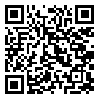Sun, Aug 17, 2025
[Archive]
Volume 5, Issue 1 (Winter 2019)
JCCNC 2019, 5(1): 53-62 |
Back to browse issues page
Download citation:
BibTeX | RIS | EndNote | Medlars | ProCite | Reference Manager | RefWorks
Send citation to:



BibTeX | RIS | EndNote | Medlars | ProCite | Reference Manager | RefWorks
Send citation to:
Rezaei M, Vatankhah M, Mirbagher Ajorpaz N, Gholami M, Zamani B. The Effect of Osteoporosis Prevention Empowerment Program on the Self-Efficacy of Iranian Older Adults. JCCNC 2019; 5 (1) :53-62
URL: http://jccnc.iums.ac.ir/article-1-213-en.html
URL: http://jccnc.iums.ac.ir/article-1-213-en.html
1- Autoimmune Diseases Research Center, School of Nursing and Midwifery, Kashan University of Medical Sciences, Kashan, Iran.
2- Trauma Nursing Research Center, Kashan University of Medical Sciences, Kashan, Iran.
3- Autoimmune Diseases Research Center, School of Nursing and Midwifery, Kashan University of Medical Sciences, Kashan, Iran. ,salam_20012003@yahoo.co.uk
4- Autoimmune Diseases Research Center, Department of Internal Medicine, Kashan University of Medical Sciences, Kashan, Iran.
2- Trauma Nursing Research Center, Kashan University of Medical Sciences, Kashan, Iran.
3- Autoimmune Diseases Research Center, School of Nursing and Midwifery, Kashan University of Medical Sciences, Kashan, Iran. ,
4- Autoimmune Diseases Research Center, Department of Internal Medicine, Kashan University of Medical Sciences, Kashan, Iran.
Abstract: (3457 Views)
Background: Osteoporosis is characterized by low bone mass and loss of the quality of bone microarchitecture. These changes increase the probability of bone fracture. This study aimed to determine the effect of an empowerment program based on the Health Belief Model (HBM) on the self-efficacy of older adults to prevent osteoporosis.
Methods: It was a randomized controlled trial with pre-test, post-test, and follow-up design. The participants were selected by convenient sampling method and randomly assigned to the intervention (n=38) and control (n=38) groups. The data collection tools were the Osteoporosis Self-efficacy Scale (OSEB) and Osteoporosis Health Belief Scale (OHBS). The intervention program was performed over a consecutive 4-week group education, and a 4-week individual follow up. The study questionnaires were completed before, immediately after the last session, and one month after the completion of the study. The obtained data were analyzed by the Chi-square, Independent t-test, and repeated measures ANOVA in SPSS V. 13.
Results: There was a significant difference between the groups in terms of the mean scores of OSEB and its subscales (P<0.05) and the OHBS (P<0.05) after the intervention. These differences were not significant in the control group in all domains (P≥0.05) except “perceived barriers of calcium intake” (P=0.04) and “health motivation” (P=0.02).
Conclusion: Education based on HBM is effective in promoting self-efficacy and osteoporosis preventing behaviors. Therefore, this kind of education is suggested for older adults to prevent osteoporosis.
Methods: It was a randomized controlled trial with pre-test, post-test, and follow-up design. The participants were selected by convenient sampling method and randomly assigned to the intervention (n=38) and control (n=38) groups. The data collection tools were the Osteoporosis Self-efficacy Scale (OSEB) and Osteoporosis Health Belief Scale (OHBS). The intervention program was performed over a consecutive 4-week group education, and a 4-week individual follow up. The study questionnaires were completed before, immediately after the last session, and one month after the completion of the study. The obtained data were analyzed by the Chi-square, Independent t-test, and repeated measures ANOVA in SPSS V. 13.
Results: There was a significant difference between the groups in terms of the mean scores of OSEB and its subscales (P<0.05) and the OHBS (P<0.05) after the intervention. These differences were not significant in the control group in all domains (P≥0.05) except “perceived barriers of calcium intake” (P=0.04) and “health motivation” (P=0.02).
Conclusion: Education based on HBM is effective in promoting self-efficacy and osteoporosis preventing behaviors. Therefore, this kind of education is suggested for older adults to prevent osteoporosis.
Full-Text [PDF 648 kb]
(1228 Downloads)
| | Full-Text (HTML) (1398 Views)
● Patients with osteoporosis have multiple physical problems related to their disease and the adverse effects of traditional treatments.
● Self-efficacy education can encourage osteoporosis preventing behaviors.
● Empowerment based on health model is effective in promoting self-efficacy and osteoporosis preventing behaviors.
Plain Language Summary
Osteoporosis is a disease in which bone weakness increases the risk of a broken bone. It is the most common reason for a broken bone among the elderly. In recent years, the focus is on using empowerment interventions combined with self-efficacy technique for its treatment. This clinical trial study investigated the effect of “osteoporosis prevention empowerment program” based on the Health Belief Model (HBM) on the self-efficacy of Iranian older adults. The study results showed that education based on HBM is effective in promoting self-efficacy and osteoporosis preventing behaviors.
● Patients with osteoporosis have multiple physical problems related to their disease and the adverse effects of traditional treatments.
● Self-efficacy education can encourage osteoporosis preventing behaviors.
● Empowerment based on health model is effective in promoting self-efficacy and osteoporosis preventing behaviors.
Plain Language Summary
Osteoporosis is a disease in which bone weakness increases the risk of a broken bone. It is the most common reason for a broken bone among the elderly. In recent years, the focus is on using empowerment interventions combined with self-efficacy technique for its treatment. This clinical trial study investigated the effect of “osteoporosis prevention empowerment program” based on the Health Belief Model (HBM) on the self-efficacy of Iranian older adults. The study results showed that education based on HBM is effective in promoting self-efficacy and osteoporosis preventing behaviors.
Type of Study: Research |
Subject:
Special
Received: 2018/07/17 | Accepted: 2018/12/12 | Published: 2019/02/1
Received: 2018/07/17 | Accepted: 2018/12/12 | Published: 2019/02/1
Send email to the article author
| Rights and permissions | |
 |
This work is licensed under a Creative Commons Attribution-NonCommercial 4.0 International License. |






